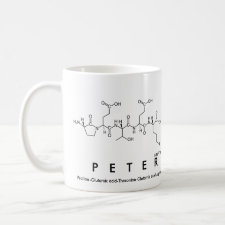
Authors: Jenik M, Seifner A, Krassnig S, Seidler K, Lieberzeit PA, Dickert FL, Jungbauer C
Article Title: Sensors for bioanalytes by imprinting--Polymers mimicking both biological receptors and the corresponding bioparticles.
Publication date: 2009
Journal: Biosensors and Bioelectronics
Volume: 25
Issue: (1)
Page numbers: 9-14.
DOI: 10.1016/j.bios.2009.01.019
Alternative URL: http://www.sciencedirect.com/science/article/B6TFC-4VFC7WD-1/2/718c00c0a02bf1b1c210d7027c75816b
Abstract: Structuring of thin polymer layers by soft lithography with template bioparticles results in the formation of selective surface cavities, leading to highly effective sensor systems when combined with mass-sensitive transducers, especially QCM. These sensors allow selective differentiation of various stages of development of yeast cells. In order to achieve a higher degree of standardisation, we fabricated plastic yeast cells and utilised them for the stamp imprinting procedures. These sensitive layers are capable of the differentiation between Saccharomyces cerevisiae and Saccharomyces bayanus. Aside from achieving the same sensitivity compared to the polymers that were structured using native cells, we realised further enhancement of selectivity exceeding a factor of three regarding the two cell strains. These ideas could also be transferred to develop a recognition system for the more flexible erythrocytes and therefore MIP-layers of polyvinylpyrrolidone were combined with QCMs. These devices provide sensor-based ABO blood group typing. Additionally, the differentiation of the subgroups A1 and A2 is shown with the generated MIP-layers that are decorated by high selectivity, namely the threefold frequency effect for the imprinted template, and negligible unspecific effects. Application of soft lithographic methods furthermore allows the design of artificial erythrocytes. These "plastic" blood cells posses an increased robustness compared to the native cells, thus opening up multiple novel strategies of surface patterning
Author keywords: QCM, sensor, molecular imprinting, Yeast, Erythrocyte, Blood group typing



Join the Society for Molecular Imprinting

New items RSS feed
Sign-up for e-mail updates:
Choose between receiving an occasional newsletter or more frequent e-mail alerts.
Click here to go to the sign-up page.
Is your name elemental or peptidic? Enter your name and find out by clicking either of the buttons below!
Other products you may like:
 MIPdatabase
MIPdatabase









